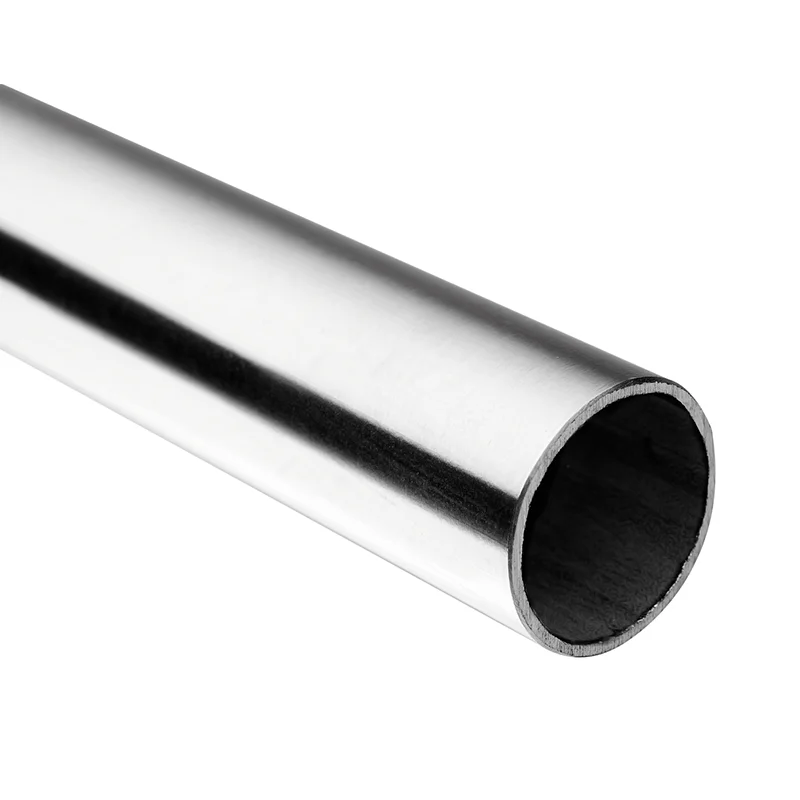Common Faults and Solutions for Stainless Steel Industrial Welded Pipes
2025-06-23
Stainless steel industrial welded pipes are essential components in various industries, including chemical, food processing, and manufacturing. Due to their durability, corrosion resistance, and strength, they are widely used in demanding environments. However, like any industrial component, stainless steel welded pipes can develop faults during their manufacturing, installation, or operational lifespan. Understanding these common faults and knowing the solutions can help maintain the integrity and efficiency of the system.
1. Corrosion
Cause:
While stainless steel is known for its corrosion resistance, exposure to aggressive chemicals, high temperatures, or poor-quality welding can lead to localized corrosion. Additionally, the accumulation of dirt or debris on the surface can create conditions for corrosion to start, particularly in high-moisture environments.
Solution:
Ensure that the pipes are cleaned and maintained regularly to prevent the buildup of contaminants.
Use appropriate grades of stainless steel suited for specific environments (e.g., 304L or 316L stainless steel for highly corrosive environments).
Check for proper welding techniques that prevent poor joint sealing, which can allow corrosive substances to penetrate.
2. Welding Defects
Cause:
Weld defects are one of the most common problems in stainless steel welded pipes. These defects can include porosity, cracking, and incomplete fusion between pipe joints. Improper welding parameters, contamination of the weld area, or subpar filler materials can cause these issues.
Solution:
Ensure the use of certified welders who are trained in stainless steel welding techniques.
Use high-quality filler material and maintain the right temperature during welding.
Perform non-destructive testing (NDT) like ultrasonic or X-ray testing to detect weld defects before putting the pipe into service.
Consider post-weld heat treatment (PWHT) to relieve stresses and prevent cracking.
3. Pipe Deformation
Cause:
During the manufacturing process, stainless steel pipes can become deformed due to excessive heat, poor handling, or improper storage. Deformation can result in misalignment of pipe fittings and reduced overall strength.
Solution:
Properly store and handle pipes to prevent mechanical damage.
Use precision equipment during manufacturing to ensure pipes are dimensionally accurate.
Ensure that pipes are properly aligned during installation to avoid additional stress on joints.
4. Blockages or Clogging
Cause:
Blockages inside stainless steel welded pipes can occur due to the accumulation of solid particles, debris, or scale buildup. This is particularly common in pipes that transport liquids with high suspended solids or fluids that can cause deposits over time.
Solution:
Regularly inspect and clean pipes to remove any buildup.
Install filters or strainers to prevent large particles from entering the system.
Use chemical treatments or pigging systems (mechanical cleaning devices) to clean the internal surfaces of the pipes.

5. Leaks at Weld Joints
Cause:
Leaks at weld joints can occur due to poor welding techniques, incorrect pipe alignment, or material defects. These leaks are especially problematic in high-pressure systems or in systems carrying hazardous fluids.
Solution:
Ensure proper pipe alignment and preparation before welding to avoid stress at the joints.
Perform regular leak tests using pressure or vacuum methods to detect and repair leaks early.
Use high-quality gaskets and seals to ensure a tight fit between pipe connections.
Reinforce weak joints or replace damaged sections of the pipe when necessary.
6. Stress Corrosion Cracking (SCC)
Cause:
Stress corrosion cracking can occur when stainless steel is subjected to tensile stress in a corrosive environment. This type of cracking is particularly prevalent in chloride-rich environments or in high-temperature applications.
Solution:
Avoid placing stainless steel pipes under excessive stress, especially in aggressive chemical environments.
Use appropriate alloys like 316 stainless steel, which is more resistant to chloride-induced stress corrosion.
Implement regular inspections to detect signs of SCC and take corrective measures like stress-relieving treatments or replacing the affected pipes.
7. Thermal Expansion and Contraction
Cause:
Stainless steel pipes are subject to thermal expansion and contraction when exposed to fluctuating temperatures. This can lead to misalignment of pipe joints, which, if left unchecked, can cause leaks or even pipe failure.
Solution:
Design the piping system with expansion joints or bellows to accommodate changes in length due to thermal expansion.
Use insulation materials where temperature fluctuations are expected to reduce the effects of thermal changes on the pipes.
Implement a regular maintenance schedule to check for signs of stress or misalignment due to thermal cycling.
8. Fading of Surface Appearance
Cause:
The surface of stainless steel pipes can lose its sheen or become discolored over time, especially when exposed to harsh chemicals or high temperatures. This issue may not compromise the structural integrity but can affect the aesthetic appeal of the pipe.
Solution:
Regularly clean the surface to remove any oxidation or staining.
Use a surface passivation treatment to restore the protective oxide layer on the stainless steel surface.
Avoid using harsh abrasive cleaning methods that can damage the pipe’s surface.
9. Inadequate Pressure Ratings
Cause:
In some instances, the wrong type of stainless steel pipe or inadequate pipe design may lead to failure under high-pressure conditions. This can occur during system start-up or if pressure ratings were not correctly matched to the application.
Solution:
Ensure that the correct pipe grade and wall thickness are selected based on the expected pressure levels.
Conduct a pressure test before the system goes live to verify that the pipes can handle the operational pressure.
Consider installing pressure relief valves or surge protection systems to manage sudden pressure fluctuations.
Conclusion
Stainless steel industrial welded pipes are vital in various industrial applications, but they are not immune to faults and failures. By understanding common issues like corrosion, welding defects, and leaks, and implementing preventive measures such as proper material selection, welding techniques, and regular maintenance, companies can ensure the longevity and reliability of their stainless steel piping systems. Proactive inspections and maintenance are crucial to keeping the pipes in optimal condition, thus minimizing costly repairs and ensuring the safety and efficiency of industrial processes.
As a professional manufacturer and supplier, we provide high-quality products. If you are interested in our products or have any questions, please feel free to contact us.


